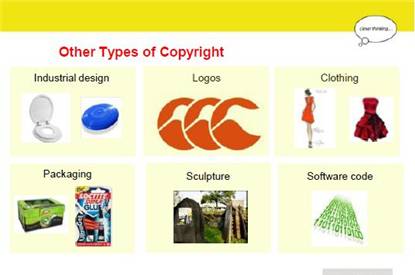Intellectual Property and Copyright Law in New Zealand
Thursday March 10, 2011
Claire Deeks of James and Wells Intellectual Property hosted a NZATD breakfast event in Ellerslie that was full of questions from those who attended!
Claire is a lawyer and patent attorney who helps clients resolve disputes relating to the infringement of trademark, copyright and patent rights, and specializes in issues relating to counterfeit and patented goods. She did a great job in explaining and illustrating in a very interactive way what is a very complex area of law (is there one that isn‟t? )
For the benefit of those that couldn‟t make it Claire has kindly shared some common myths along with several of the slides used in her presentation.
MYTH 1: Copyright is only protectable if it is 'registered' or if there is the © symbol. In New Zealand there is no system for registering copyright. Copyright protection is automatic once a work is 'in material form' (e.g. reduced to writing or recorded on some other nontransitory medium) provided certain criteria are met. In New Zealand there is no system for registering copyright. Copyright protection is automatic once a work is 'in material form' (e.g. reduced to writing or recorded on some other nontransitory medium) provided certain criteria are met.
MYTH 2: If I make changes to the material, I won't infringe copyright. This is a very common myth. Copyright is infringed where a person reproduces a substantial part of a work without the permission of the copyright owner. What is 'substantial' is a qualitative (not quantitative) determination that varies from case to case. (So, for example, courts have held that as little as four lines of a 32-line poem was a 'substantial part', and that a few bars of a tune, as they were a recognisable part of the song, were a substantial and therefore protectable part. On the other hand a single paragraph taken from a book probably will not constitute a "substantial" part but a diagram taken from the same book may do, because the diagram is likely to be considered a separate copyright work on its own.)
MYTH 3: I won‟t infringe copyright if I copy less than 10% of it. While there are specific circumstances set out in the Copyright Act where this rule applies, these are of very limited application and mostly relate to reproduction of portions of materials for educational, private study and research purposes and not for commercial purposes.
MYTH 4: I created it so I own it. Generally speaking the creator of a copyright work is the first owner of the copyright rights. However exceptions apply to (1) works which have been made on commission (where they may be owned by the person commissioning the work), (2) works which have been created by an employee (where they may be owned by the employer) and (3) where the parties agree who owns copyright (for example in an employment agreement or contract).
MYTH 5: If I give credit I don't need permission. Giving credit means you can look at yourself in the mirror and say you are not a plagiarist. However, giving credit is not a defence to copyright infringement. There are legal consequences for the unauthorized use of someone else's copyrighted material. By contrast, plagiarism has ethical consequence. In fact you can plagiarize material not protected by copyright simply by taking credit for it.
To sum up Claire‟s advice in one sentence:
"Copyright protects time, effort and labour, and it often isn‟t enough just to acknowledge or reference another person‟s work. "
Of course the next sentence is:
If in doubt – seek legal advice

Anyone wishing to seek further advice can contact Claire at claire.deeks@jaws.co.nz
